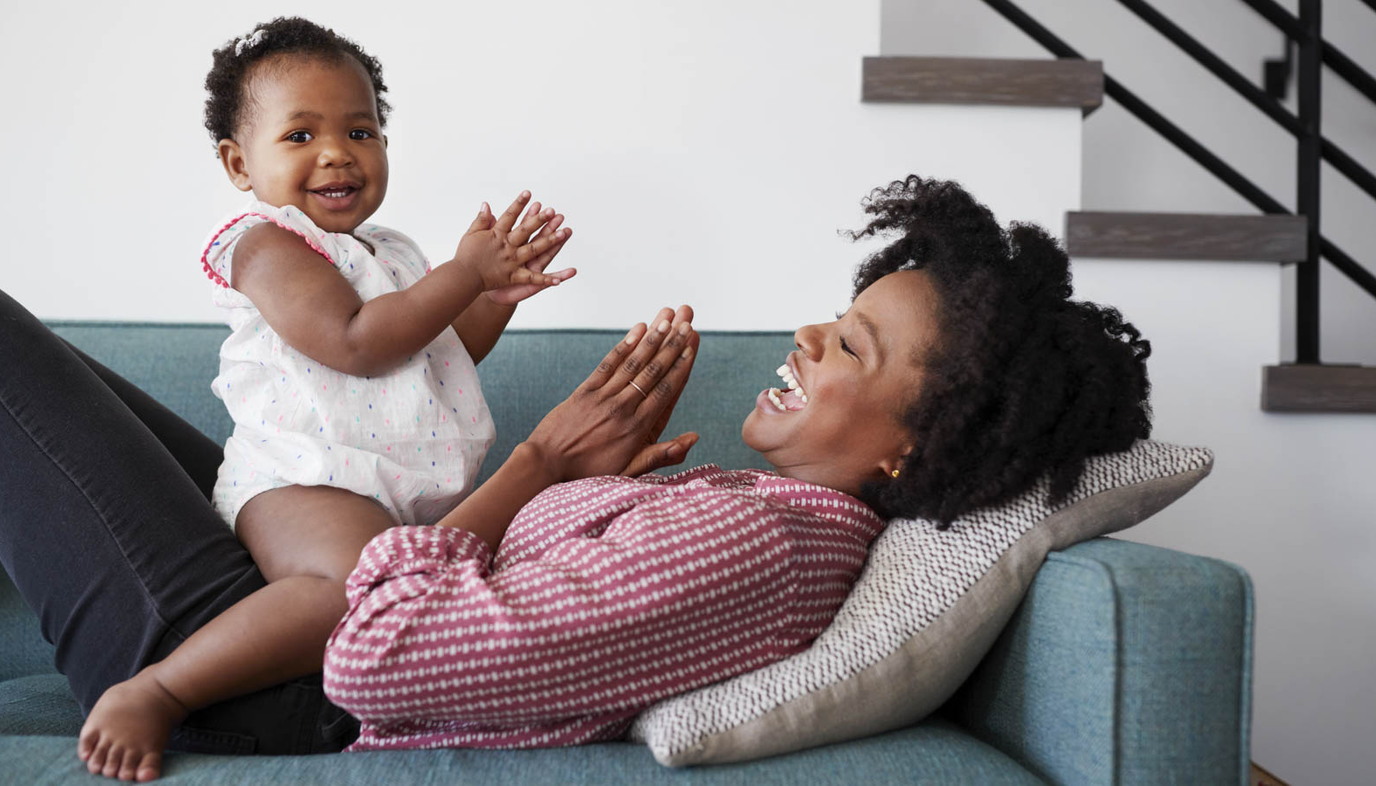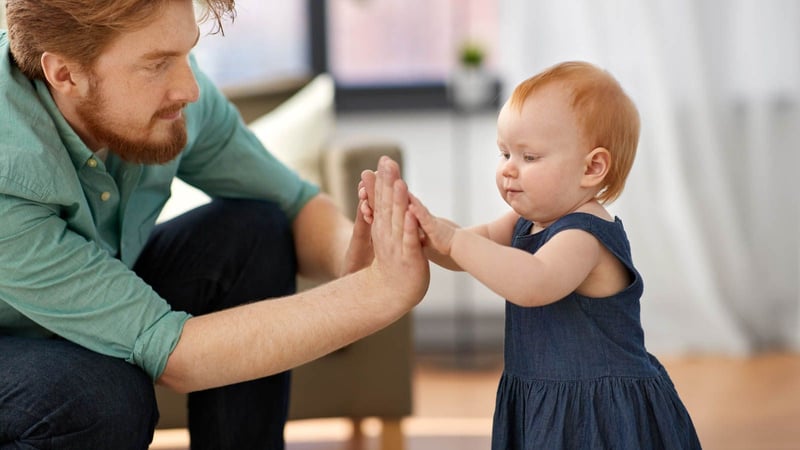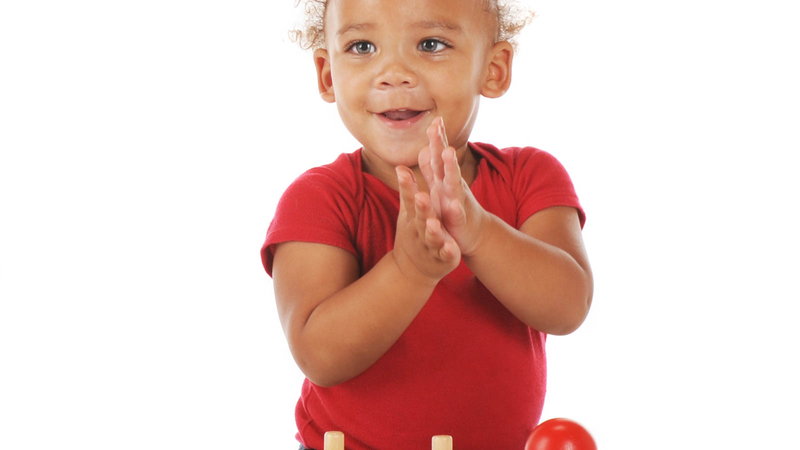
At seven months, the average baby will weigh somewhere between 17-18 lbs and will measure around 26 ½ – 27 inches. At this point, your baby's growth rate has slowed down and your little guy or gal won't be picking up weight at quite as fast of a pace as before. You can expect him to continue gaining around a lb a month and growing about a half inch in length per month.
If you haven't offered your baby solid foods yet, he may be ready to give it a try now. Your baby should have lost his tongue-thrust reflex (a reflex that causes baby to push food back out with his tongue). His tummy should be ready to handle food. Most moms offer solid foods at around 6-8 months, but some moms wait longer. You should follow your baby's lead on this. If he shows signs of being ready for solids like eye-balling your food or grabbing it off your plate, then he's probably ready. If you offer solids, and he pushes it back out with his tongue, he might not be quite ready. You can start by offering him single-grain cereals or single-ingredient pureed fruits or veggies. Always offer one food at a time. Wait a few days to make sure your baby doesn't have an allergic reaction before offering a different food.

Your baby is only taking pureed foods or soft foods he can gum, but soon he will start to develop teeth so he can chew his food. If you notice your baby drooling a lot or chewing on everything in sight, you might want to take a feel inside his mouth. If you run your finger along his gums, you might feel a little bump under his gums where his tooth is coming in. Most babies will get their incisors (front teeth) first. The bottom teeth usually come in before the top. If your baby is teething, he may be more fussy than usual. You can give him a cold teething toy or a cold washcloth to chew on. If your baby still seems to be in pain, talk to your doctor about using Tylenol or ibuprofen. Don't use over-the-counter teething gels that contain benzocaine. They can be dangerous for baby.
Your baby has made a lot of progress developmentally. He should be able to roll over in both directions now, he may be sitting up by himself, and you may see him trying to scoot around or even crawl now. Babies often start to figure out how to crawl by getting on all fours and rocking back and forth. Sometimes they will rock like this for a while before they discover how to move forward, but rocking is a good sign that your baby is getting ready to crawl. He may not learn to get around by crawling at first. Some babies roll, scoot, or creep to get around until they learn how to crawl.
By the End of the Seventh Month Your Baby Can:
Try to scoot or rock back and forth on all fours
Eat pureed foods from a spoon
Move a toy from one hand to the other
Sit with support
Roll over in both directions
Hold a bottle by himself
Eat soft finger foods
Play with noisy toys like rattles
Your Baby Likes:
To suck on fingers, thumb, or toes
To study objects around him
To play with his food
To look at things upside down
To put things in his mouth
Safety Tips:
Read the directions on your baby carrier. Make sure baby is positioned correctly in the carrier. Never drink hot liquids while carrying baby in a carrier or bend over with baby in the carrier.
Pick up small objects from the floor as you see them. Get on your hands and knees to look around. Baby is grabbing everything now, and it will likely go in his mouth.
Make sure your car seat is installed correctly in the backseat of your car; in the middle of the backseat is the safest.
Even though your baby may be rolling over now, you should still continue placing baby on his back to sleep.
Never leave your baby unattended in a stroller.
Activities for Your Baby:
Clap, clap, clap your hands! Show your baby how to clap his hands. Practice by putting your hands behind his hands and clapping together. If he doesn't like clapping together, just show him how you clap and let him watch. Hopefully he will start to copy you.
Play a game of hide and seek. Take a toy and hide it underneath a baby blanket. Then show him where his toy is. Try hiding it again and see if he looks under the blanket for it.
Pots and pans make a great set of drums. Grab some pots and pans and a wooden spoon. Let your baby bang on his pots and pans drum set. He will have a blast!

